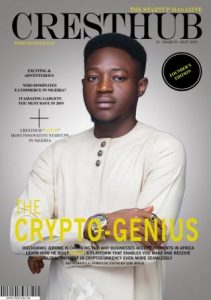The twenty-first century has ushered in an era of connectivity and with the advent of digital technology, many countries of the world have continued to improve the accessibility of technology for people to make their daily lives more convenient and easier.
However, while technology is changing the world in amazing ways, certain segments of the population face barriers to reaping the full benefits of this mass development.
According to the World Health Organization (WHO), there are more than 1 billion people with disabilities worldwide. With the majority of the world’s 650 million disabled people living in developing countries, and 80 percent in rural areas.
Disability is defined as the presence of an impairment that has a significant impact on daily life and just like the rest of us, people with disabilities deserve to explore life and do the exact same things healthy people do.
Thus, innovators are focusing on new designs and products that people with different disabilities can use to enable them actively participate and contribute to society in productive ways.
With all the advancements in technology today, here are some of the innovations that help people with disabilities live more independent lives.
Enabling Touch with Prosthetics
With advances in material science, electronics, and neuroscience, prosthetics like the 3D printed limbs are revolutionizing aspects of medicine. This innovation allows the physically challenged to easily attend to their daily activities as lack of an arm or leg can be extremely tough.
In Nigeria, amputees have access to 3D-printed limbs designed and created by the tech startup, Northeast Humanitarian and Innovation Hub, Yola, in Nigeria. The 3D-printed prosthetics cost about $1,000. The hub has however donated over 6 prosthetics to individuals in the region who have lost their forearms and have a list of over 100 amputees across the north-east waiting to be fitted by the company.
The company is not only focused on printing limbs, but also includes robotics to improve advanced functionality, thus bringing back the sense of touch for amputees.
Giving a Voice to the Speech Impaired
There are many programs that allow text-to-speech, a great feature for visually impaired people and also for many people with dyslexia, programs such as Ivona, iSpeech and TextAloud3. Similarly for speech and writing impairments, Google has engaged people with disabilities by designing a voice-activated Android smartphone app called Voice Access.
Thus, providing the possibility to use the apps functions without touching a screen and is accessible on every android device and can be used anywhere in the world.
Powering the Next Generation of Hearing Devices with Sound
In order to improve the lives of the hard of hearing, researchers at Columbia University, New York, are working on cognitive hearing aids, which monitor users’ brain activity to identify sounds. These hearing aids will be able to amplify volume while quieting the surrounding noise, allowing for better hearing.
Founded by Kola Olanipekun, Vocalscript is an online indigenous digital transcription software company that enables hearing impaired persons to have access to recordings and accurate transcripts.
Its innovative services are increasing productivity and effectiveness in various sectors like the legal and educational fields among others.
Uniquely, VocalScript understands and transcribes even thicker Nigerian accents, aiding local speech recognition to enable the hearing impaired to understand audio content.
Other examples of technical hearing aids include the Convesor audio device and Tap Tap.
Improving Vision Using Image Recognition Softwares
Visually impaired people struggle to get information from maps, graphs, pictures, and even the small things around them. Image recognition software has made things easier.
This AI app from Microsoft, Seeing AI, for the visually impaired uses smartphone cameras to describe the world around us with sounds. It is able to recognize people you know and can even describe their appearance, including how they feel.
It reads images on screens and printed documents and scans barcodes in stores to provide product descriptions. The app is currently available in English and seven other languages including Japanese, it also describes images in other apps like Twitter and WhatsApp.
The information processed on the app is communicated through speech, which helps blind and visually impaired people navigate streets, identify objects, and negotiate intersections. Another very advanced innovation is the ‘Eye See’.
Maintaining Motor Flexibility with Handwriting Recognition Tools
Handwriting can be a serious handicap for many people, who are dyslexic, but also for people with arthritis or rheumatism in their hands or arms.
However, there are a range of assistive technology programs that can help with hand manipulation skills and flexibility. These computer programs and tablet apps help develop motor skills and a good understanding of language – something not everyone has. Programs like Xmind, Grammarly, Evernote, keyboards, and touch screens help because they allow you to enter letters and words by typing or touching the screen, rather than using a pen or pencil.
Although these innovative applications help people with disabilities around the world achieve equity at work and allow them to be self-confident and self-sufficient, they are so advanced that this contributes to their inaccessibility in Nigeria. This is because they are often not included in our social welfare programs, which makes it more expensive for many low-income individuals.
Therefore, building accessibility into the process of design availability is critical and so are legal systems that need to be updated to provide and implement these tools for the people who need them.
Thus, enabling disability inclusion for a more connected and productive society.































